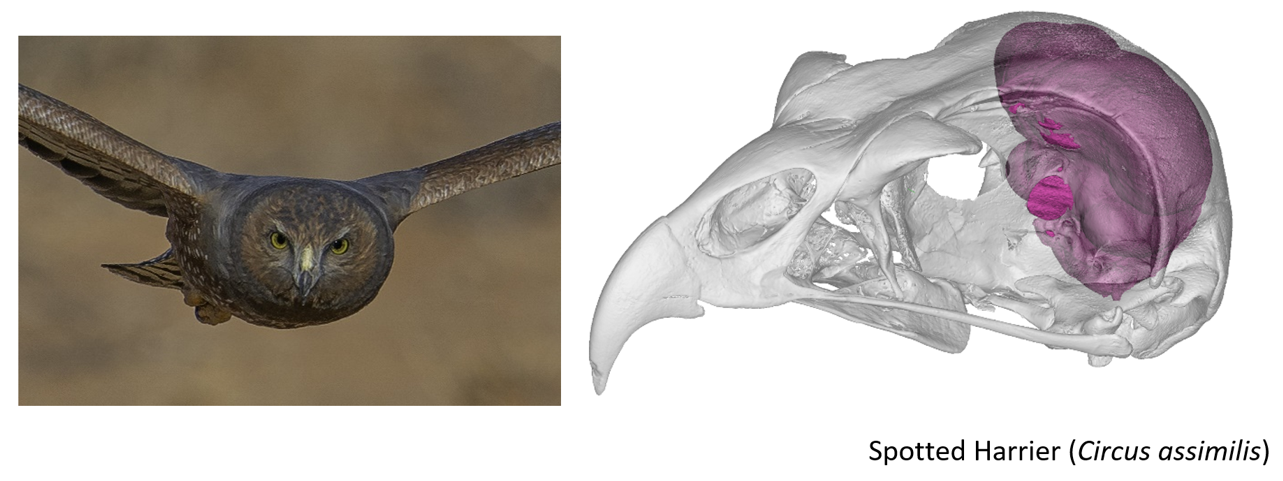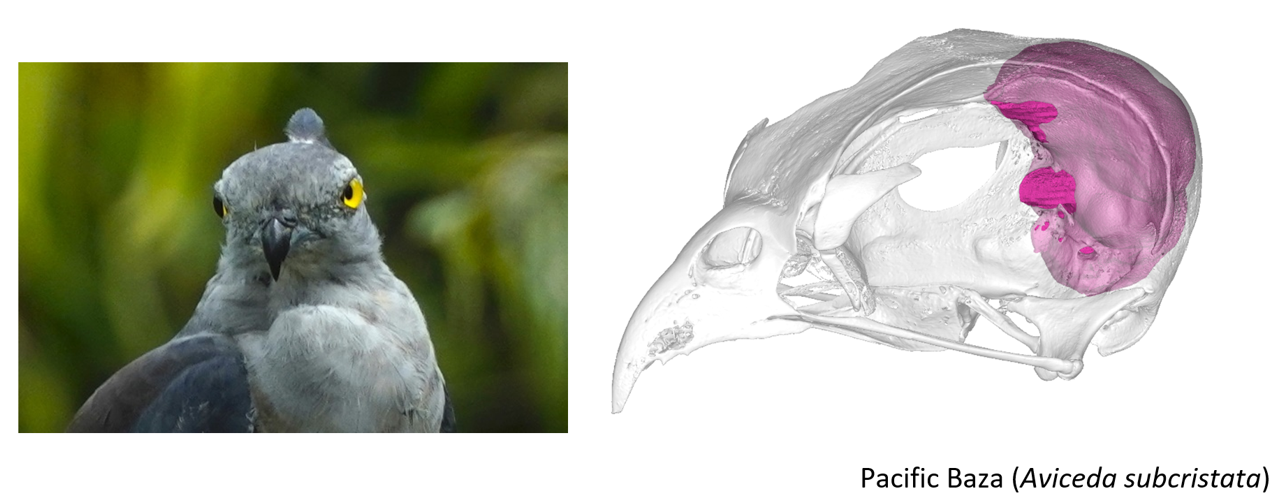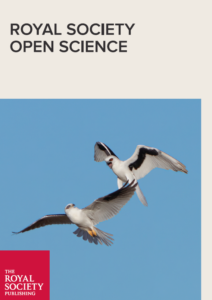Using advanced NIF imaging techniques to study bird skulls is helping researchers understand how they see, how they evolved to hunt at night, and the best ways to protect them.
In the process, researchers are also digitising valuable museum collections, connecting communities to nature and science and unlocking possibilities for researchers to investigate our natural world.
NIF Micro-computed tomography (CT scanning) at the University of Queensland’s Centre for Advanced Imaging has been used to scan 30 raptor skulls from Australian museums, create 3D reconstructions, measure and then study the anatomy for tell-tale signs of a bird’s visual powers.
Research published in Royal Society Open Science compared the world’s only nocturnal hawk, the Australian letter-winged kite Elanus scriptus, to other hawks and falcons with differing hunting styles.

Associate Professor in Evolutionary Biology at Flinders University Vera Weisbecker said findings threw into doubt long-held views that changes to skeletal structure were needed for evolution.
The research sought to understand whether evolutionary changes to the eye-area of the skull was evidence of the kite’s adaptation to night-time hunting, Dr Weisbecker said.
“The answer is no. In fact, there are two close relatives of the letter-winged kite that have a similar bony visual system, but both hunt in daylight,” she said.
The findings have implications for the study of evolution, with researchers often deducing that changes in skeletal remains are linked to behavioural changes.
“That’s not necessarily the whole story. In this instance, there’s no difference between the eye regions in the skulls of the night-time and the day-time hunters, so if you were just looking at the skull, you’d never know.”
Dr Weisbecker said different birds had greatly adapted their vision to have excellent visual sensitivity, sharpness, colour discrimination or even UV wavelength detection.
For Australia’s letter-winged kite, it’s possible that the nocturnal bird also picks up odours and movement, as well as adjusting its hunting methods.

CT-scanning the 30 birds of prey was primarily undertaken by CAI’s Dr Karine Mardon, on NIF-funded equipment, with skulls provided by Queensland Museum.
Dr Mardon said the imaging techniques, teamed with recent advances in anatomical understanding, opened the door to a wealth of new knowledge without needing live birds or their tissues.
CAI was the ideal place to undertake the research, enabled through national investment in imaging equipment and expertise, data analysis capability, and existing relationships with the Queensland Museum and Flinders University, she said.
Dr Weisbecker said obtaining eyes and brains of rare species was generally not feasible but some aspects of their anatomy could be estimated from skulls.
“We are extremely lucky to have Australia’s amazing museum collections at our disposal to help us understand this bird without the need to find and disturb the species,” she said.
“The kinds of things you can study closely with CT scanning are the size of their eyes and their position in the skull – are they facing forward or more on the side?”
PhD student Aubrey Keirnan compared 3D reconstructions of the letter-winged kite’s skull and brain with other birds of prey in the Weisbecker lab.
“The diversity among hawks that are active during daylight is possibly the most striking between the Spotted Harrier and the Pacific Baza,” she said.
“Both are incredible predators, but one species resembles owls while the other is much more pigeon-like in appearance.
“These two species really highlight how adaptable and diverse the visual systems of birds are, even amongst species within the same family.
“You can have birds that are anatomically similar but behave differently – and species that are behaviourally similar but anatomically different. Both sides of the coin are true.”
But Dr Weisbecker said the research was not just about insights into evolution.
The Australian letter-winged kite lives in remote, arid Australia, avoids human settlements and is highly elusive. It is listed as near-threatened, with population estimates varying between 670 and 6,700, she said.
“To conserve the species, it is critical that we understand its behavioural needs and capabilities, but these are extremely difficult to observe.
“Think about fences and powerlines potentially posing a greater threat to nocturnal birds than their daytime relatives.
“For example, in an earlier study, we found that the nocturnal night parrot is likely unable to see small objects because it may trade high resolution for higher contrast. This may put it at risk of hitting with thin fence wires.”
Dr Mardon has also scanned the bones of a night parrot, a bandicoot and many Australian marsupial mammals.
“We have an excellent working relationship with Queensland Museum, who trust us with handling some of their precious items,” she said.
Later this year CAI will install a new NIF-funded CT-scanner, a Yxlon FF35CT, along with new software to increase graphics capability, such as accurate reconstructions of soft tissue around the skull.
CAI expects greater demand for scanning which contributes to research on evolution, and Australia’s native flora and fauna.
Read the article on the Australian letter-winged kite Elanus scriptus here:
